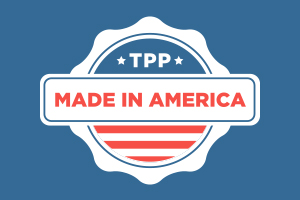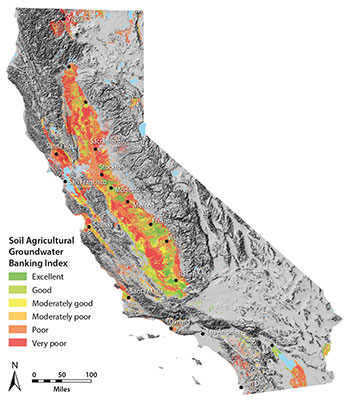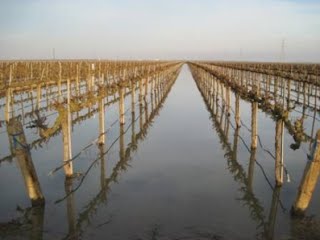“Things are changing. It’s just how do you get them to change fast enough?”
By Joseph Erbentraut
Senior What’s Working Editor, The Huffington Post
When farmers make the news in relation to climate issues like droughts, floods or extreme heat, they are often described in opposition to both environmentalists and, sometimes, scientists alike.
But such a depiction doesn’t tell the full story of the many ways that some farmers and ranchers are adapting to the changing climate, embracing new approaches that reduce greenhouse gases, increase water quality and sustainably contribute to and improve America’s food supply.
In his new book, Two Percent Solutions for the Planet, Courtney White, co-founder and executive director of the Santa Fe-based Quivira Coalition, a nonprofit that works to find common ground between the worlds of conservation and agriculture, features 50 different examples of farmers and ranchers who are having success doing just that.
The percentage in the title, White explains, refers not only to the number of Americans who are farmers, but also to the low cost associated with the promising approaches he is spotlighting. His goal is that the other 98 percent of us will sit up and take note that real progress on seemingly daunting challenges like California’s drought is not only possible, but already taking place.
The Huffington Post recently spoke with White.
HuffPost: What led you to covering this subject matter and why did you choose to focus on examples of solutions?
White: What I was seeing was a tremendous amount of innovation and entrepreneurial stuff on the ground that solved food issues and water issues, sustainable practices that we now call regenerative agriculture, but I was not seeing those stories in the media. I decided to take a run at it myself. The goal of this project was to try and chronicle or profile 50 different regenerative, sustainable, exciting practices I saw on the ground, not theoretical things, and try and make them interesting to get the word out to folks who don’t normally follow these issues very closely. The folks I profiled in this book have been at this for decades now working on these things.
It seems, particularly with an issue like the California drought, that farmers are often painted as the villains when it comes to issues of food and water security and our climate. Do you think some of that criticism is warranted?
Change happens first on the edges: Folks who are frustrated with the system or who have an idea that doesn’t fit with the current paradigm, unorthodox approaches, that’s where change starts. There’s always resistance. People don’t want to change and then we have an economy that’s built at big scale, so things that are innovative that can solve problems sometimes have trouble working their way in.
Over 20 years of doing this, what we call progressive or sustainable ranching has made a lot of progress, particularly along the lines of collaboration with environmentalists. It’s encouraging. Is it happening at scale fast enough? That’s not clear yet. But I wanted folks to know there are these alternative models out there. Some of them are brand new, some of them have been around for quite a while.
The challenge now, of course, is how do we take this innovation and put it to work. I tell folks we don’t need more solutions. We have a lot of them already and some of them have worked well. What we need to figure out is how to implement them at a scale that matters.
Do you come up against a lot of opposition from the sort of “old guard” with your approach to these issues? Do you think that is changing?
That’s a persistent challenge that we face. When I started the Quivira Coalition 20 years ago, everybody said to us that ranchers and environmentalists will never get along, which wasn’t true, and that this style of ranching will never work, which isn’t true. Today I hear people say the single best thing we can do for the planet is to stop eating red meat and that’s not true. There’s a lot of resistance to change on a lot of levels, but at the same time the challenges we face continue to rise. I see a race between the problems that are growing and our refusal to change to meet those challenges.
We can’t fight Big Ag. They have too much money. But we can make our case to consumers directly and I hope they will vote with their pocketbooks, with what they eat and who they support. But the other problem is changing peoples’ minds. There’s still lots of resistance too among the environmental community to progressive agriculture. As the challenges continue to mount, particularly on the climate front, I think people will see these as effective, profitable and appropriate practices. I think it’s just a matter of time. I’m hopeful about the urgency of it all. I’ve seen in 20 years the governmental agencies change their policies, ranchers change their practices, conservationists change their attitudes.
Do you have a particular story or two that you think best highlight the progress that is being made?
I think the interface between high-tech and low-tech in the chapter about agrivoltism, where solar panels are built above a farm field, is a great example of how we can bring scientific knowledge around tech to food production. The chapter on Farm Hack, where people are working together over the Internet to share data and using open source software to communicate. That kind of stuff is a really exciting way of bringing this all together. The way this generation is looking at these problems and trying to bring the knowledge and way of looking at the world through technology to the age-old problem of farming, the way technology meets the soil, I think really shows us the way into the future.
Personally I like the story of Sam Montoya in ranching. The question you hear all the time is how are we going to feed all these people? There are a lot more people coming — 9.6 billion by 2050 — and what you hear from Big Ag is that you can’t do it with organic farming and you have to go to more GMOs and all that. But Sam shows us how to double our sustainably intensified food production on his ranch with just cows, grass and water. He ran 220 head of cattle on 93 acres of land in New Mexico. That’s a lot of food coming from a little bit of land. There are answers to these problems if we’re willing to think differently and consider some new and some old practices.
So how do you think we get from here to there — to scaling up and making these sorts of practices that are working more widespread?
Different folks think different things. I’m not a policy person, I’m an on-the-ground person, but I know there are lots of governmental policies that stand in the way of particularly small-scale agriculture. All of them are geared toward the very large scale and I know many people are frustrated by the red tape, but I don’t quite know what to suggest there. At some point, Congress is going to have to step in and encourage or incentivize these practices to some degree, but that’s a tall order.
A little more abstractly, I think the thing that links these all together for me is carbon. If we could have a carbon marketplace that would pay folks to pull carbon out of the atmosphere and store it in soils and then these practices would become part of a carbon economy, I think these practices would take off. And at some point the regenerative part of this has to be valued by consumers, people who want to pay for it. People who eat food and use electricity. All these folks work at small scales, but to go up, the economy has to decide that this is valuable, so let’s figure out how to pay them to do this.
What is the single biggest takeaway you hope the average person will take away from reading this book?
To understand these alternatives even exist. I really want to provoke and stimulate a reader so that if they went through the book and found one story that resonated with them. That’s why it’s about farming and ranching and tech and ecology, to appeal to different people and what they’re interested in and how they can find out more about it. To ask questions where they are and where they live. What can I do if I’m concerned about these problems, what can I do to participate and, particularly for folks who live in cities, where do I get my food? Do I get it from a system that is contributing to the problem or from farmers and ranchers who hold the solutions to these problems in their hands?
This interview has been edited and condensed for clarity.
See the original article on The Huffington Post’s website, including additional video and photographs.








